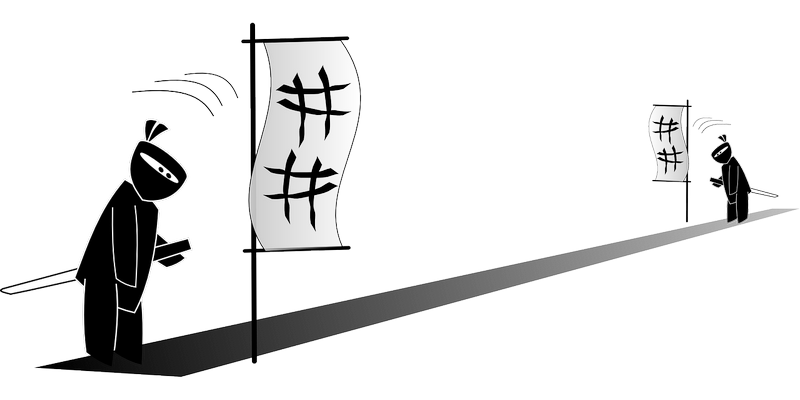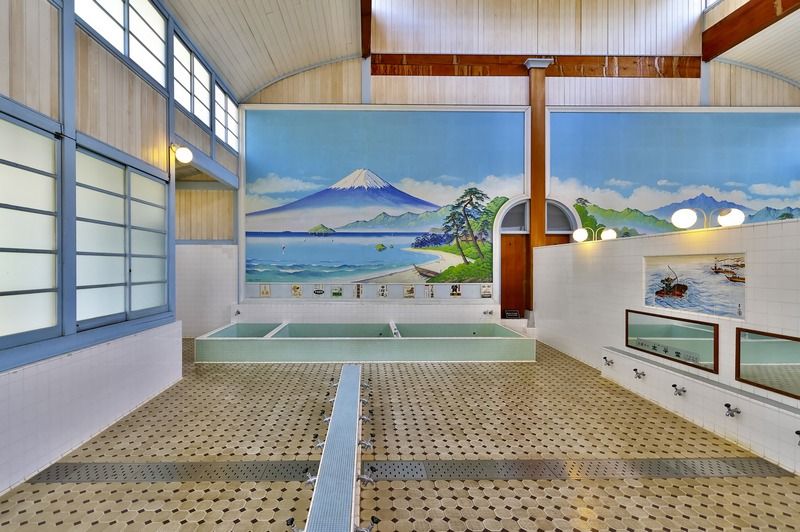Japanese Survival Guide - Etiquette
I often hear people say that the Japanese are too polite, but actually living in Japan for so long is really "tired" (Taiwanese, referring to being more polite)! If you want to fully describe Japanese etiquette practices, I am afraid you can write a large paper. Focusing on the different identities of foreigners, here are some common practices for your reference.
- tourists
- Business contacts

tourists
Tourists naturally refer to people who travel to Japan for sightseeing. If you can understand the various local etiquette rules in advance, you can definitely make yourself more comfortable in Japan.
All-purpose golden sentence
Before leaving, remember 3 Japanese golden sentences, that is, ask, how much, and thank you in Chinese.
Excuse me, borrowed, called waiter, sorry... 👉すみません (Su Mi Ma Sen) Su's u is almost silent.
How much? 👉おいくら (O i Ku La)
Thank you 👉ありがとう (A Li Ga Tou)
Japanese pronunciation has a high error-tolerance rate, and it doesn’t matter if the pronunciation is not accurate. If you read it according to the Roman phonetic alphabet in brackets, there is a high probability that the Japanese can understand the Japanese you speak.
If you think 3 sentences are too many, at least memorize the first sentence . Saying this sentence, combined with body language, before Japan wants the other person to do something, can solve most of the tourist's troubles. Japanese people will also find you polite and will be more willing to assist.
The "how much" in the second sentence can actually be replaced by the first sentence. For example, you fancy a certain product and want to bargain with the store. Switch to (Su Mi Ma Sen) and then take out the calculator and press your price, and the other party can understand what you mean.
By the way, although clearly marked prices are commonly used in Japan, some stores can still bargain. The common ones are Ameyoko, who sells home appliances , snacks and souvenirs .
Ryokan
When staying in a hotel, especially a Japanese-style hotel, there is a small area for people to put on and take off their shoes upon entering the room. If you can put the two shoes together with the toes facing out after taking off the outdoor shoes, the waiter will be amazed in his heart, and he is really a guest who understands our Japanese etiquette. In addition, if there are indoor slippers, it is best not to wear them directly on the tatami, because the tatami also has the function of sleeping.
Ryokans usually have large baths, because they are shared by everyone. If foreigners are inexperienced, they usually don't know how to bathe. Therefore, there are almost always large user manuals posted in it. In addition to the Japanese version, there is also an English version. You should be able to understand the meaning by looking at it. To put it simply, don’t jump into the big bath as soon as you enter, go to the flushing position next to you to wash away the dirt and sweat from your body before taking a bath. Don't play in the big bath, especially parents with small children. After soaking in the big bath, I will rinse it again before going out to get dressed.

The above list is not a must-follow rule, and common-sense behavior is polite enough. what! It is best to do the flushing action before taking a bath. After all, the big bath is shared by everyone, and it is also a good habit to maintain hygiene.
By the way, friends with tattoos who want to soak in the big bath should go to the counter and ask if they can go in. If the tattoo area is not large, cover it with a small towel or something, so you don't have to ask. In Japan, there is still such a concept that people with thorny dragons and phoenixes on their bodies are mostly people in that area. Some shops will explicitly prohibit tattooers from using the large bath, mainly because other customers will be afraid when they see it, and they will not dare to come back in the future.
Business contacts
The economic and trade exchanges between Taiwan and Japan are quite frequent, so there are also many business travelers traveling between the two places. Seniors who often travel to Japan should already be familiar with these basic business etiquettes in Japan. However, if you have no experience in this area, you can refer to them.
Souvenir
It is best to prepare a souvenir for the first visit or to visit a Japanese manufacturer after a long time to promote friendship. For gift suggestions, you can bring cakes and tea bags with local characteristics. It is best to choose small packages that are easy to distribute. If you don't know what kind of souvenir to choose, you can't go wrong with choosing the most representative Taiwanese specialty "Pineapple Cake". It's just that I once bumped into a Japanese manufacturer's office filled with all kinds of pineapple cakes... 😆
If you know the preferences of the person you are visiting, it is also good to prepare gifts in that regard. For example, the president or the person in charge of the other party likes to collect decorations of a certain animal image, and it is better to do what he likes. However, in such a situation, it is best to prepare two gifts, one for the individual and one for the other employees.
Be punctual
Many people should have heard that the Japanese are very strict with time. Regardless of whether it is a high-end train such as the Shinkansen, the general subway is also very punctual, and even city buses can list relatively punctual timetables.
Visiting customers in Japan must also be punctual, and it is best to arrive 5 minutes earlier than the agreed time. For the first visit, if you are not familiar with the location of the other party's office, or are not familiar with the road conditions, you would rather arrive early than be late.
If you arrive too early, it is best not to go in immediately, and wait for about the same time to go in to avoid causing trouble to the other party. If you arrive too early, the other party may be busy with other work, or the last meeting has not ended.
In case of unexpected situations on the way, such as traffic jams, subway delays, etc., if it may exceed the agreed time by more than 5 minutes, be sure to notify the other party as soon as possible.
business card
Japan is still habitually using business cards. Remember to bring enough business cards when visiting the other party for the first time to avoid embarrassing situations where there are no business cards to exchange. It is especially difficult to temporarily replenish business cards when you are away on business. A meeting may be attended by many people, and each person will issue a business card, which will be distributed quickly. If you are going to Japan to participate in the exhibition, be sure to prepare a few boxes of business cards to be prepared.
Japanese people usually say the following lines when exchanging business cards. What department and name am I in? Please advise. Friends who don't understand Japanese, as long as they know that this is their habit, they don't need to open their mouths, just smile.
When you receive the other party's business card, don't rush to put it away, go back to your seat and put the business card on the table. There is a little trick in the order of placement, you can place the business cards in the order of the other party's seating. Meetings usually take a while, and glance at business cards at any time during the meeting to help you match the person's appearance with the name.
seat
The seating order is basically the same as ours. The visiting manufacturer usually arranges a meeting in the conference room. It is best if the host has arranged a seat, but in general, only the receptionist will bring the guest into the conference room and leave, and then the other party will come in. Before waiting for the other party to come in, you need to decide for yourself who sits in which position. There are usually two seating arrangements. The host and the guest occupy one side. The inner side farthest from the door is the guest's host, and the other is the center. How to judge which ranking method to use can only be said to adapt to local conditions. From my own experience, most conference rooms with projectors on the table are center-based.
After the meeting, for example, Japanese manufacturers entertained for a meal, and the seating arrangement of the meal was basically the same as above. If you encounter a round table, use the farthest away from the door. How to arrange the second and third meetings after the meal? I don't have much experience. 😎
Looking at it, there is a very prominent point in Japanese etiquette, basically thinking around this point, and most of them are inseparable. Thinking for each other and not causing trouble to others , the concept of punctuality is the best embodiment.
Originally, I planned to continue to write down the etiquette practices of working in the Japanese workplace. After browsing the Internet, I found that there was already a lot of information, so I didn't need my class. (It also saves me from writing too long 😁)
2021/12/16 posted.
Like my work? Don't forget to support and clap, let me know that you are with me on the road of creation. Keep this enthusiasm together!





- Author
- More